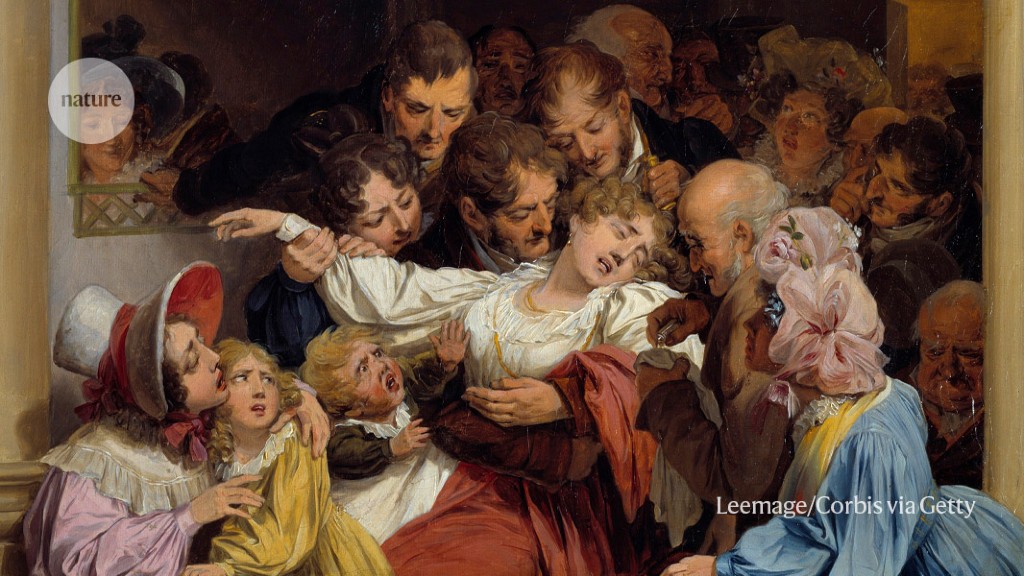
Whether as a result of heat, hunger, standing for too long, or merely at the sight of blood or needles, 40% of people faint at least once in their lifetime.
But exactly what causes these brief losses of consciousness — which researchers call ‘syncope’ — has remained a mystery for cardiologists and neuroscientists for a long time.
Now, researchers have discovered a neural pathway, which involves a previously undiscovered group of sensory neurons that connect the heart to the brainstem. The study, published in Nature on 1 November1, shows that activating these neurons made mice became immobile almost immediately while displaying symptoms such as rapid pupil dilation and the classic eye-roll observed during human syncope.
The authors suggest that this neural pathway holds the key to understanding fainting, beyond the long-standing observation that it results from reduced blood flow in the brain. “There is blood flow reduction, but at the same time there are dedicated circuits in the brain which manipulate this,” says study co-author Vineet Augustine, a neuroscientist at the University of California, San Diego.
“The study of these pathways could inspire new treatment approaches for cardiac causes of syncope,” says Kalyanam Shivkumar, a cardiologist at the University of California, Los Angeles.
Novel neurons
The mechanisms that control how and why people faint have long puzzled scientists, partly because researchers tend to focus on studying either the heart or the brain in isolation. But the authors of the study developed novel tools to show how these two systems interact.
Using single-cell RNA sequencing analysis of the nodose ganglia, an area in the vagus nerve (which connects the brain to several organs, including the heart), the team identified a group of sensory neurons that express a type of receptor involved in the contraction of small muscles within blood vessels that causes them to constrict.
These neurons, called NPY2R VSNs, are distinct from other branches of the vagus nerve that connect to the lungs or the gut. They instead form branches within the lower,muscular parts of the heart, the ventricles, and connect to a distinct area in the brainstem called area postrema.
Using a new technique that combines high-resolution ultrasound imaging with optogenetics — a way of controlling neuron activity using light — the researchers stimulated the NPY2R VSNs in mice while monitoring their heart rate, blood pressure, respiration and eye movements. This approach allowed the team to manipulate specific neurons and visualise the heart in real time. “This was not possible before, because you needed to figure out the identity of these neurons,” says Augustine.
When the NPY2R VSNs were activated, mice that had been freely moving around fainted with a few seconds. While passed out, the mice displayed similar symptoms to humans during syncope, including rapid pupil dilation and eyes rolling back in their sockets, as well as reduced heart rate, blood pressure, breathing rate and blood flow to the brain.
“We now know that there are receptors in the heart that when made to fire, will shut down the heart,” says Jan Gert van Dijk, clinical neurologist at Leiden University Medical Centre in the Netherlands.
In humans, syncope is usually followed by a rapid recovery. “Neurons in the brain are very much like extremely spoiled children. They need oxygen and they need sugar, and they need them now,” says Dijk. “They stop working very quickly if you derive them off oxygen or glucose.”
These nerve cells begin to die after about 2 to 5 minutes without oxygen, but syncope typically lasts only 20 to 40 seconds. “If you add oxygen again, they’ll simply resume their work and do so just as quickly,” says Dijk.
Brain activity
To better understand what happens inside the brain during syncope, the researchers recorded the activity of thousands of neurons from various brain regions in mice using electrodes. They found that activity decreased in all areas of the brain except one specific region in the hypothalamus known as PVC.
When the authors inhibited/blocked the activity of PVC, the mice experienced longer fainting episodes, while its stimulation caused the animals to wake up and start moving again. The team suggests that a coordinated neural network that includes NPY2R VSNs and PVC regulates fainting and the rapid recovery that follows.
“Coming from a clinical standpoint, this is all very exciting,” says Richard Sutton, clinical cardiologist at Imperial College London. The discovery of NPY2R VSNs “doesn’t answer all questions immediately”, he adds, “but I think it could answer with future research almost everything.”
For “questions that cardiologists have been asking for decades, now you can bring in a neuroscience perspective and really see how the nervous system controls the heart”, says Augustine.
The next big question is studying how these neurons are triggered, says Dijk. “It’s been one of the biggest riddles of my entire career.”
